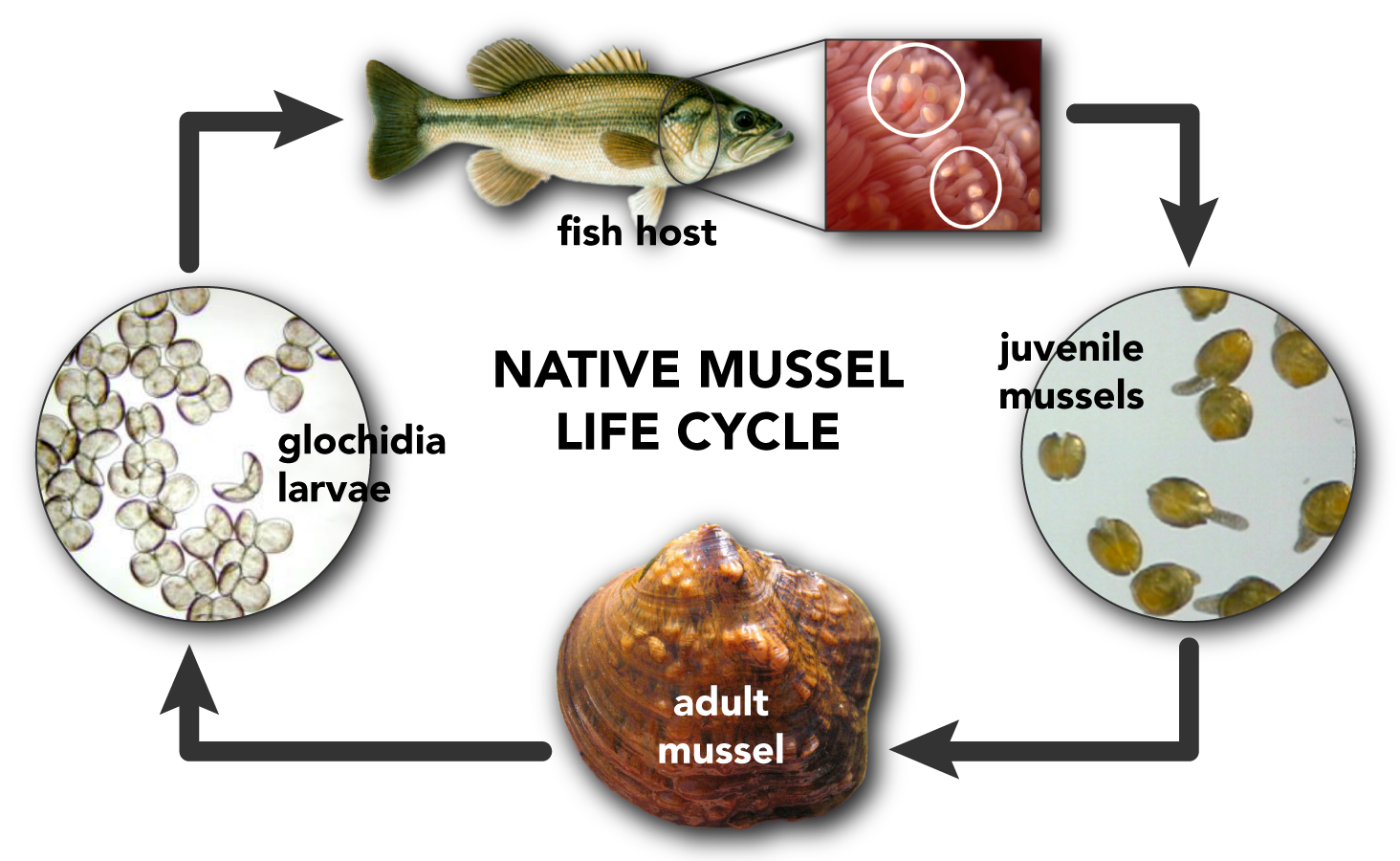Kingdom – Animalia
Phylum – Mollusca (Snails, Slugs, Clams, Octopus, Squids, etc.)
Class – Bivalvia (Clams, oysters, mussels, etc.)
Order – Unionoida
Freshwater Mussels have:
- two shell halves connected by a hinge and “teeth.”
- a shell composed of calcium carbonate secreted by mantle
- no head region or radula
- separate males and females
- a siphon through which they filter nutrients
- ctenidia (gills) for breathing and feeding
- a foot to dig into substrate or move along
- a larval stage (glochidia) that parasitize fish

- maintain riparian (shoreline) vegetation to decrease erosion and absorb pollutants
- clean all gear used in our waterways to prevent the spread of exotic species like zebra mussels
- properly dispose of household chemicals and medicines to keep them out of the waterways
Visit the INHS Mollusk Collection website to learn more about ongoing research.